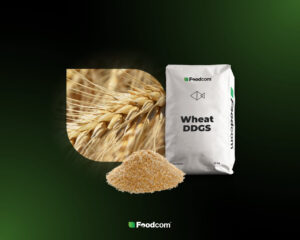- Modern wheat varieties are characterized by low genetic diversity.
- This affects their lower resistance to environmental conditions, pests and inferior nutritional value.
- A collection from the 1920s-30s, which contains about 1,000 wheat varieties, may be the answer.
- Based on studies of these varieties, scientists are working to increase the diversity of modern wheat. This is to prevent potential destruction of the species by unforeseen climate change or new pests or diseases.
- This is another step toward ensuring food security for a growing population.
Wheat problems in modern agriculture
“The “Green Revolution” of the 20th and 21st centuries caused a rapid development of agriculture and breeding techniques, evident, among other things, through a dramatic increase in cereal production, made possible by the development of high-yielding crop varieties, mainly wheat and rice. Unfortunately, as a result of these developments, there has been a reduction in the genetic diversity of wheat – modern varieties are mainly from Central and Western Europe, from only two ancestral groups.
Reduced diversity has resulted in the loss of grain resistance to pests, diseases and climate change, reduced nitrogen use efficiency, as well as protein or nutrient content in wheat. This poses a risk of yield loss in the event of unexpected environmental circumstances, as well as food security problems in the face of a changing climate and growing population. A study published in Nature this June suggests that the seed collection of Arthur Ernest Watkins may hold the key to strengthening modern agriculture and feeding an ever-growing population.
Who was Arthur Ernest Watkins and how can his collection help us?
Arthur Ernest Watkins was a British botanist, an assistant agricultural officer in World War I. Later, in the 1920s and 1930s, he was involved in collecting local varieties of bread wheat from around the world. The purpose of the collection was to preserve these varieties and safeguard agriculture – it was rightly predicted that scientific advances in plant breeding would greatly reduce crop diversity. Eventually, more than 1,000 varieties of wheat were collected from 7 ancestral groups and from 32 countries in Europe, Asia and North Africa. Of these, 827 varieties have survived to the present day, having already been tested 12 years ago.
Their genetic diversity is 67% greater than that of modern varieties. This seed collection – painstakingly maintained for 100 years – is the largest collection of historic wheat in the world. Scientists have already crossed 119 varieties from the collection with modern wheat, yielding a new collection of 12,000 varieties. They have also carefully analyzed the genome of century-old wheat varieties, identifying 137 traits that have been lost in modern varieties, and included them in a free Academic and Breeding’ Toolkit designed to support breeders in restoring the diversity of wheat crops. Close collaboration between scientists and farmers is still needed to restore wheat to its glory days, increase seed resistance and reduce the chances of destroying the world’s crop in the event of unforeseen environmental conditions.







